In Oregon, cannabis test scores are big part of every recreational purchase, and both wholesale and retail prices are affected by the results. The higher the percentage of THC, the higher the price and, hopefully, the higher the consumer. But what if I told you that the THC-content analysis results of the flower you’re currently smoking could vary over 10 percent from lab to lab? This would mean that all those test scores are virtually meaningless. You may be paying twice as much as you should, or you might just be getting the deal of a lifetime. So just how reliable are lab results for cannabis products? That’s what we wanted to find out.
For Oregon farms, cannabis testing is part of everyday life. Each batch must be tested by an accredited lab before it can be sold. Many people have suspected that there might be differences between labs, but there’s no way to know for sure without running a comparison. We decided the only way to know which labs are the most accurate would be to send the same sample to a number of different labs and compare the results. What came back was truly shocking.
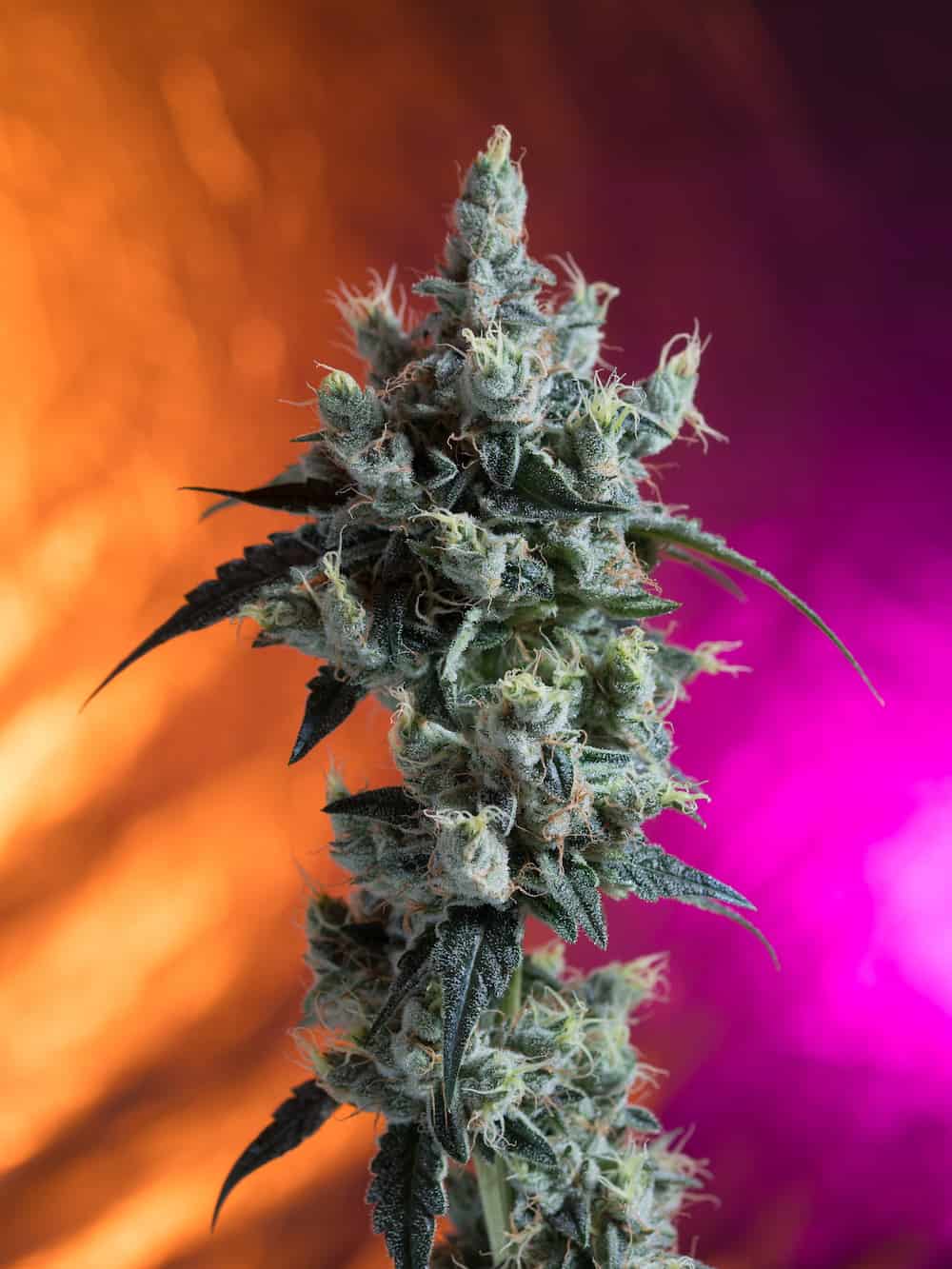
To ensure we were providing standardized samples for the comparison, we approached testing a bit differently than normal. We ground up a small amount of Bruce Banner buds and placed them on a black foam-core board. We then separated the cannabis shake into multiple piles, making sure they were all consistent. We received a few puzzled looks from employees as it appeared that we were preparing to snort a huge line of shake!
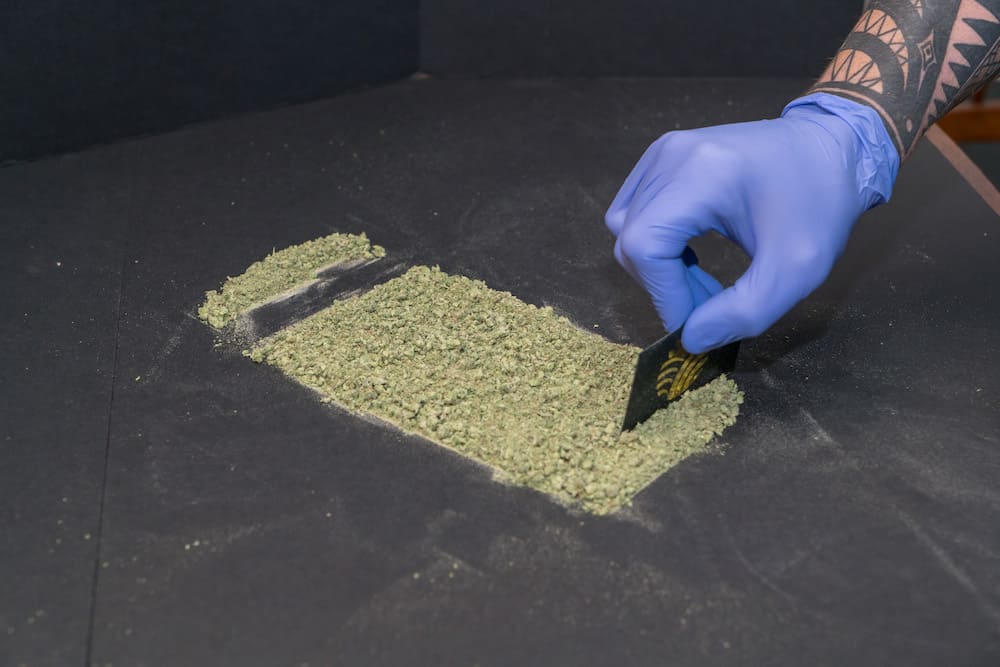
A total of six samples were given to the labs for testing. Since the samples weren’t for resale, we didn’t bother with the pesticide, mold or terpene tests normally required by law.
Before getting to the results, let’s talk a little about the testing process. How are samples taken? What is the process and what type of equipment is used? How can we be sure the testing is accurate? There were a lot of questions looming before we even got started.
The first step in the testing process is picking up the product. Each lab sends out a representative to obtain the samples. The lab rep examines the flowers and picks the ones that are best representative of the harvest. They’re looking for what they consider an average sample for each batch. In Oregon, batch size is limited to 15 pounds. So this means that a harvest of 25 pounds of a single strain must be broken into two different test batches and the testing process must be done twice. Some variation can be expected but, in theory, the same harvest should have very similar results from batch to batch, regardless of the lab used.
Every lab is careful in its labeling procedures. Oregon law requires tag numbers for every stage of the process, which must be logged into the Oregon Liquor Control Commission (OLCC) database. The OLCC requires that cannabis be tracked at all times—including when drivers are transporting product.
When a batch of flower is sent for testing, the results are final and cannot be resubmitted. Growers are not allowed to send out multiple batches to different labs and then pick the highest number. In order for our little experiment to comply with the law, we had to label the test samples “not for use.”
Once the samples arrive at the lab, the first thing done is proper logging and labeling. This isn’t just for legal reasons; it’s also crucial in making sure none of the strains get mixed up. It’s easy to imagine how many samples arrive at the lab every day and how quickly things could go wrong without strict logging and labeling procedures. What may sound like a dream job is actually a stoner’s nightmare! If you’re used to hanging out with a bunch of dirty farmers, you’ll immediately feel uncomfortable in the sterile lab environment. All this cleanliness serves the purpose of making sure the samples don’t become contaminated.
Once everything is logged in, the samples are put into a temperature- and humidity-controlled environment until ready for testing. The first step of the testing process is to grind the flower into a fine dust. Some labs freeze the product in dry ice before grinding as this helps reduce damage to the fragile trichomes, making the results more accurate. The fine cannabis dust is then added to a measured solution and shaken until all the cannabinoids are evenly mixed. What you end up with looks a lot like a marijuana milkshake.
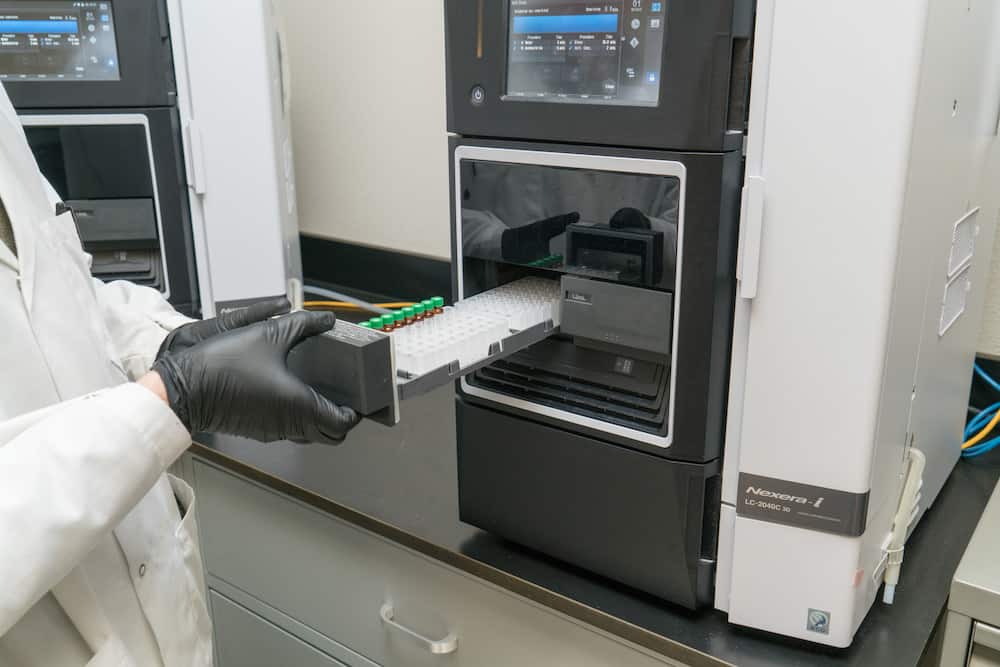
When the milkshake is finished, the material is placed into a sonic bath to further separate the cannabinoids from the plant material. The sonic bath is like a little Jacuzzi for test tubes but instead of bubbles it uses ultrasonic sound waves. The final step in the separation process involves placing the samples into a centrifuge, which spins the materials at a high speed. The heavier plant material collects at the bottom of the test tube and the clean cannabinoid solution is left at the top.
A small sample is removed, filtered and diluted once again. The material is loaded into a high-performance liquid chromatograph, often referred to as an HPLC. This testing procedure is more accurate than gas chromatography as no heat is used during the process. Heat applied to THC changes its properties, making gas chromatography results less precise. The HPLC separates each compound by using its unique electrical charge and measuring the quantity with a UV sensor. If this all sounds like hard-core science, that’s because it is!
The results of the HPLC are fed into the inventory tracking system. The amounts of THC, THCA, CBD, CBN and many other compounds are logged into the database, and the results are sent to the grower or company whose product was tested. These results are used to create packaging and come up with the final pricing structure.
How important are THC percentages? It’s not an exaggeration to say they can be the difference between whether a pot-production company survives or goes under. If you show up with a Bruce Banner strain testing out at 20 percent THC, no one will give you the time of day. But if you show up with a Bruce Banner strain at 30 percent, all the shops start salivating. You’ve got product that everybody wants. Not only can you sell your product for $1,000-$1,500 more per pound, you can actually sell it! In Oregon, many growers have a hard time unloading anything with under 20 percent THC and usually turn low-testing product into oil for cartridges or edibles. So THC percentage is a big deal to every cannabis farmer. Everyone wants the highest results possible, because final pricing is very much influenced by THC percentage as determined by lab testing. When it comes to THC, bigger is better.
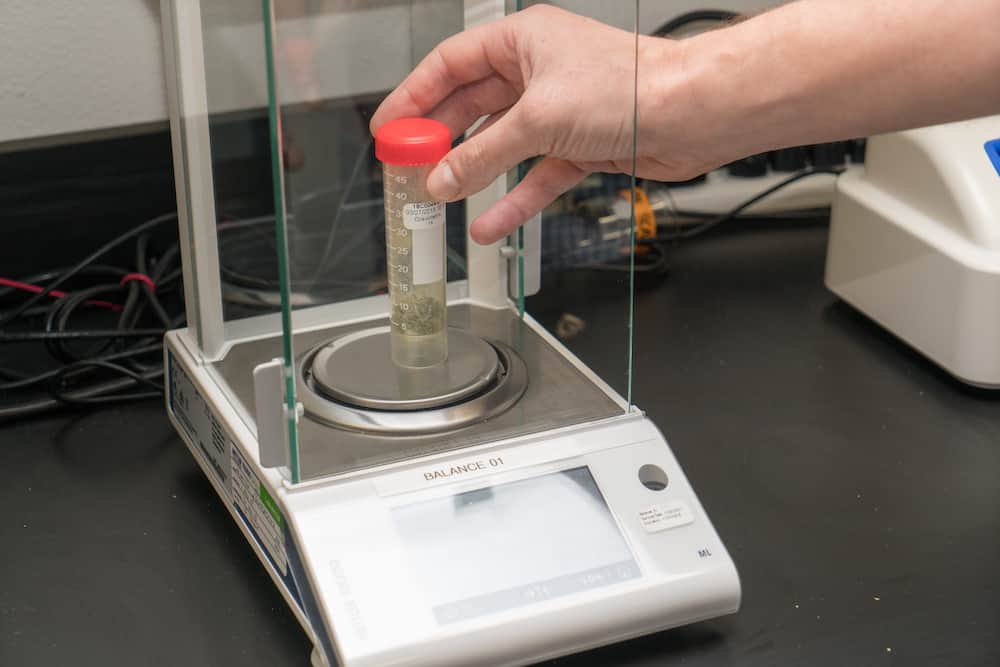
How does THC percentage affect the retail cannabis industry? Well, of course, the obvious effect would be that higher THC strains command a higher market price. This isn’t necessarily a bad thing if the tests are accurate. No one has a problem with paying a premium price for a 30 percent THC Bruce Banner strain, assuming that’s what it really is. It’s only a problem when someone is paying top-shelf prices for mid-quality flower. Of course, in some cases, it actually works in the buyer’s favor. For example, you may think you’re purchasing some inexpensive mids and end up with a bag of fire!
So on to the test results from our comparison experiment. We’ve decided to keep the labs used in this experiment anonymous. The primary reason for this comparison test is to find out if Oregon cannabis-testing labs are consistent, not to put anyone out of business. Here are the results, listing THC percentage from low to high:
Lab 1: 20.40% THC, 24.59% total cannabinoids
Lab 2: 22.90% THC, 25.70% total cannabinoids
Lab 3: 24.84% THC, 28.26% total cannabinoids
Lab 4: 26.18% THC, 30.73% total cannabinoids
Lab 5: 26.20% THC, 29.30% total cannabinoids
Lab 6: 30.50% THC, 35.00% total cannabinoids
The test scores for all six labs average out to 25.17 percent THC. You can see some of the lab results are similar, but which test score is correct? The truth is that any one of them could be the correct one. From a farmer’s perspective, if you were to use the scores from Lab 1, you would have a hard time selling your strain. None of the shops would be interested because it would be overshadowed by all the higher-testing strains. At the same time, if you used the scores from Lab 6, everyone would be breaking down your door for as much product as they could get. Of course, as mentioned previously, growers are not allowed to shop around for the highest score.
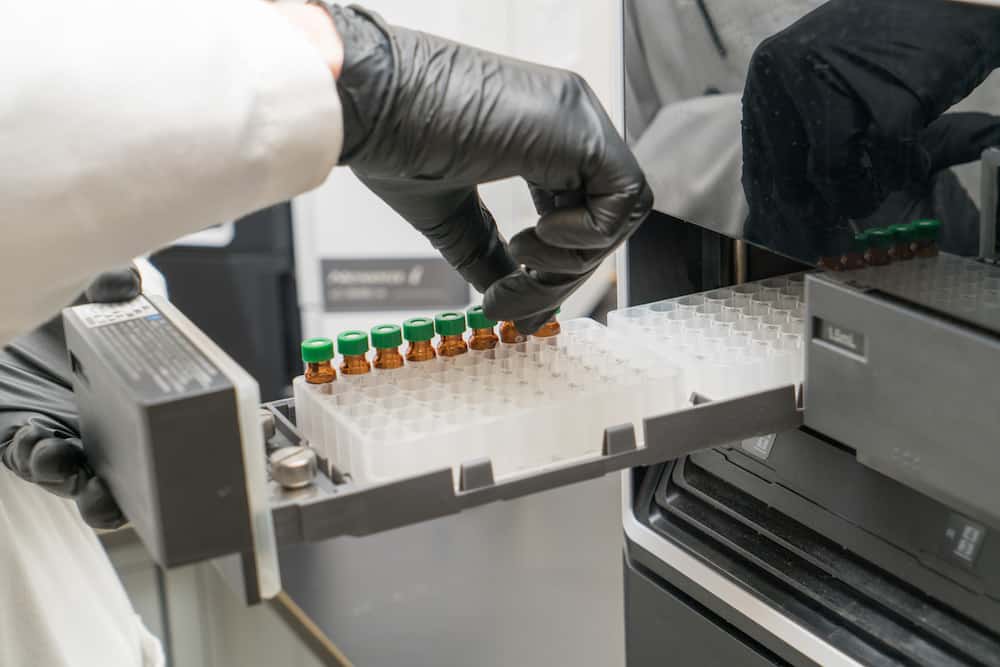
So how can this be? Isn’t it the whole point of scientific testing that every result be duplicable? Clearly, we’re not seeing a lot of duplication here. In fact, the variation in results here is incredible. How can we be sure what the correct THC percentage is when every lab comes up with a different result?
By law, every jar of cannabis must have the THC percentage listed on the side. When someone walks into a rec store to purchase cannabis, they assume what they see on the jars is accurate. What happens when medical patients determine their dosage based on the THC content only to find out that they must now consider which lab did the testing? It’s incredibly difficult to explain away the variance in these testing results. You would expect small discrepancies, but this is rather extreme as different labs tested the same cannabis at 20.4 percent and 30.5 percent THC!
Many in the cannabis industry are dependent on these test scores. If they can’t hit the high-test mark, they can’t make a profit. Growers can’t afford to have their products shortchanged by a low-testing lab. If a lab is found to swing to the low side, they won’t stay in business for long. At the same time, a lab producing high test scores will draw a huge following almost immediately. None of this is fair. The only real solution is to have some sort of standardized testing system that eliminates the extreme variance we see here. I imagine the OLCC, which likely is unaware of this issue and views its testing rules and regs as a clear-cut scientific solution, will need to step in with a fix. Of course, if this is an issue in Oregon, one can assume it is an issue in other legal states as well.
This feature was published in the August 2018 issue ofHigh Times magazine, subscribe right here.














